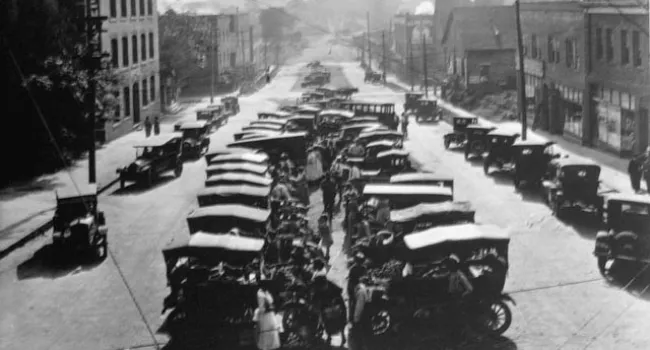
Photo
The Greenville curbside market, photographed in 1922. Courtesy of the Greenville County Historical Society.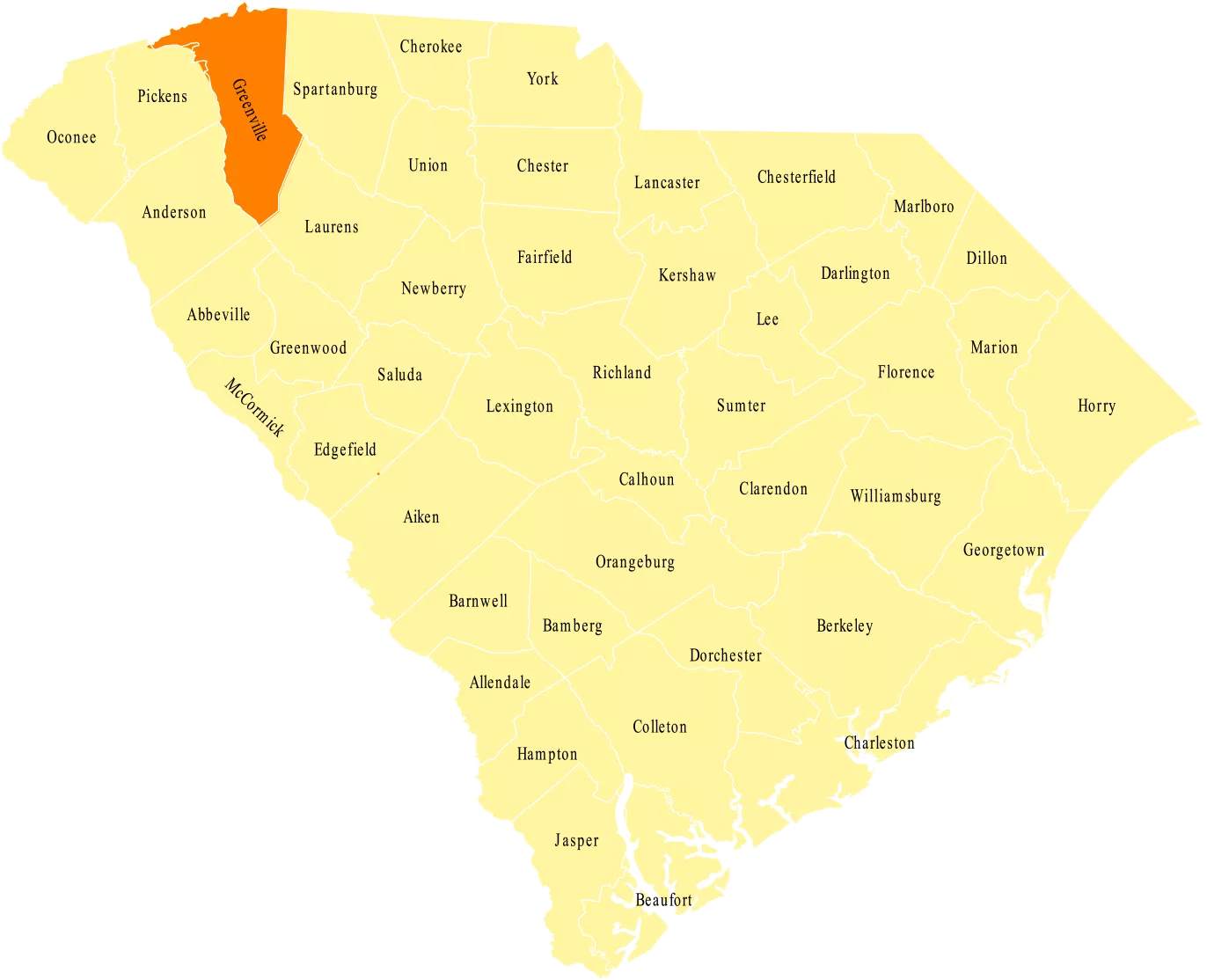
Greenville County, South Carolina’s most populous county, lies in the Upstate. Two popular opinions exist on the origin of the name of Greenville County and its county seat: Revolutionary War general Nathanael Greene or area local Isaac Green.
Cherokee Indians lived in the area first, but they eventually gave up control of the land to South Carolina in a 1777 treaty. After the signing of this treaty, a fair number of Scotch-Irish and English settlers came to the region. Soon after, in 1786, Greenville District was founded. However, this district existed within the Washington District from 1791 to 1800.
Although historically a vacation area for coastal South Carolina planters, the county’s rivers powered the majority of the county’s early economy. The river gave rise to iron works, cotton mills, and Greenville’s textile industry. From the Reconstruction Era until the late 20th century, the textile industry defined Greenville County’s economy, at one point so much so that the county earned the title of “Textile Capital of the World.”
Modern Greenville County’s economy has transitioned away from textiles. Over the last few decades the county has been the answer for many corporations wondering where to relocate. Greenville County’s economy now centers around technology, manufacturing, engineering, and business.
History of Greenville County. Accessed June 03, 2016.
http://www.greenvillecounty.org/
South Carolina Counties by Population. Accessed June 08, 2016.
ttp://www.southcarolina-demographics.com/counties_by_population

Photo
The Greenville curbside market, photographed in 1922. Courtesy of the Greenville County Historical Society.
Photo
This view of downtown Greenville was taken in the 1920s with the city decorated for the Christmas season. Courtesy of the Greenville County Historical Society.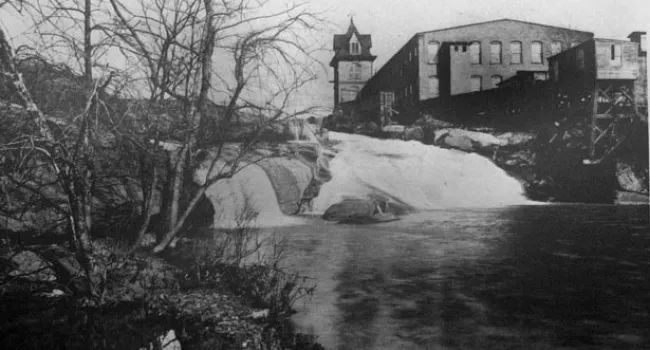
Photo
Reedy River Falls, site of the Camperdown Textile Mill, Greenville. Courtesy of the Greenville County Historical Society.
Photo
The Old Records Building, designed by architect Robert Mills, served as the Greenville County Courthouse until 1855. It is photographed here in 1918 behind the Barnum and Bailey's Circus Parade...
Photo
The portrait artist William H. Scarborough (1812-1871), his wife Miranda, and their infant son spent the summer of 1840 in Greenville, when he made this painting of the falls on the Reedy River...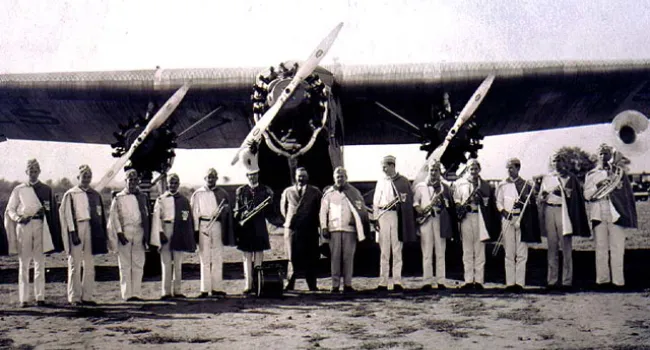
Photo
The Furman University Band performed at the formal opening of the Greenville Municipal Airport, November 1928. Band members reportedly went aloft in the Ford tri-motored plane in the background,...
Photo
This stone bridge over a stream in Greenville County, 7 miles north of Tigerville, was built by hand labor out of large stones in 1820. U.S. Department of Agriculture photograph, May 1936.
Photo
Paving heavily traveled roads with concrete involved such heavy costs that states sought help from the national government. This fresh concrete on a Greenville County road was part of a Federal...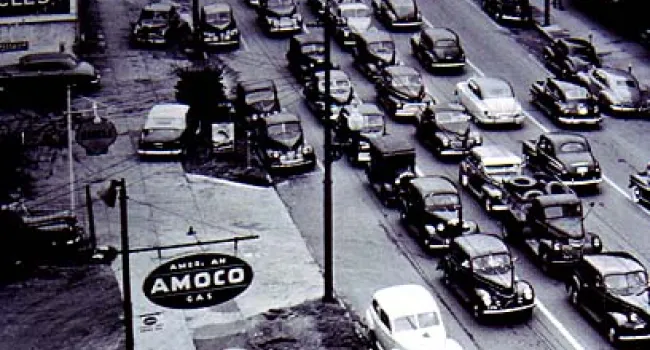
Photo
As the number of South Carolinians who owned automobiles increased in the 1930s, so did the number of nationally owned gas stations, like this one in Greenville. Courtesy of the Greenville County...
Photo
Coal furnaces provided central heating for many South Carolina homes. This Ballanger coal wagon delivered fuel to houses throughout the Greenville area in the 1950s. Courtesy of the Greenville County...